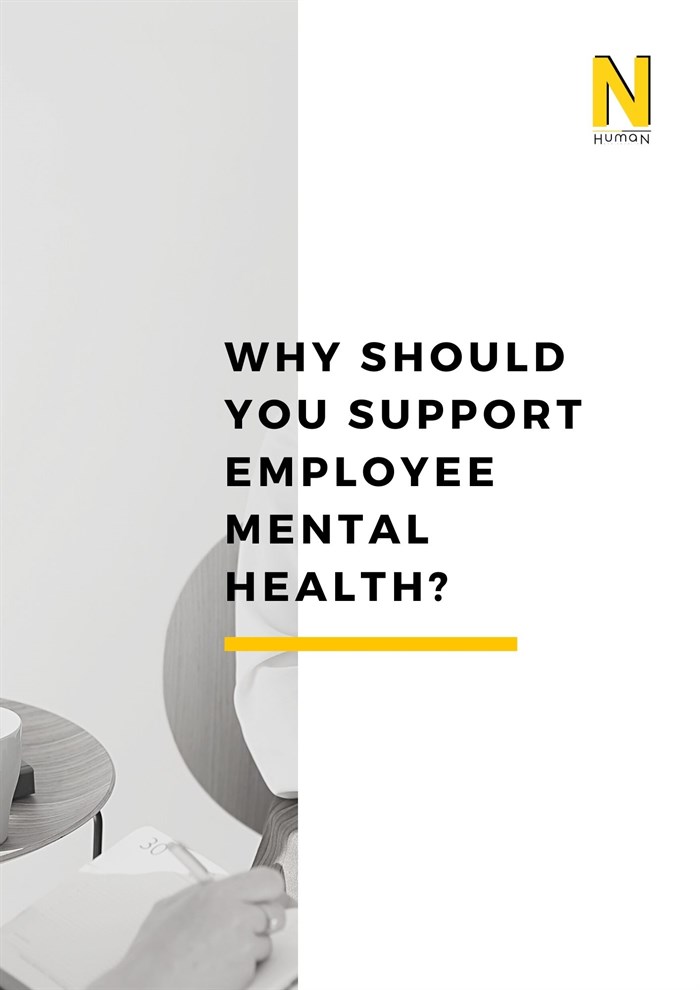WHY SHOULD YOU SUPPORT EMPLOYEE MENTAL HEALTH?
According to the World Health Organization, one in five people struggles with mental health problems. Two-thirds do not get the support and treatment they need due to neglect, stigma, costs, waiting times, and lack of access to treatment. Mental health problems are seen as one of the biggest health problems of the century, with depression as the leading cause of disability and premature death.
In this context, it is important to review your workplace policies and make sure that they do not cause harm. Raising awareness of mental health issues and prioritizing mental health provides long-term benefits for both you and your employees. By creating a healthier work environment, employees can discover their full potential and have peace of mind knowing that you are preparing your business for success.
Organizations should look to implementing initiatives around policymaking, communication, educational resources, and early intervention treatment: This may include establishing policies and guidelines around mental health at the institutional level. It is important to train HR to identify and successfully address issues, and to provide employees with self-help tools and programs.
Some Ways to Promote Mental Health at Work:
• Promote equality in the workplace.
• If possible, designate a counselor to talk to your employees if they are not feeling well. Make sure that this person has the expertise to provide this support. Having these support resources readily available for employees to use can quickly provide them with the help they need. This is where an HR manager's role is critical in finding high-quality, evidence-based options to ensure success. Providing a variety of options for an employee's support and treatment, whether through your benefits plan, an on-staff health counselor, online programs, or a combination of these, will help improve employee well-being and improve functioning in the workplace.
• Recognize mental health and disorders. Make a difference.
• If possible, organize employee bonding events to encourage teamwork and build trust.
• Open ways for employees to better access support and treatment when face-to-face help, support, and treatment opportunities are not available, including by using digital technology.
• Reduce stigma and create a positive workplace atmosphere. There is still a stigma surrounding mental health. By revealing problems, people fear being isolated, seen as abnormal, and unsuitable for work. Employers have an important role to play in supporting workers with mental health education and fostering open dialogue. Providing awareness-promoting resources can help create an accessible and positive workplace that fosters engagement and attracts talent.
• Focus on Early Intervention/Prevention. Considering that we spend about 60% of our time at work and that work can be full of stressors – workload, deadlines, co-workers’ behaviors and personalities, management styles, concerns about job security, etc. – it is right to develop a workplace culture of healthy ways to deal with stress. one way. It can help solve problems before they become costly for the organization.
• Increase Productivity and Engagement. When you are physically fit, you tend to be healthier. It is the same in mental health. Improving the mental health of your employees – making them mentally resilient to the stress of the pandemic – can improve thinking, decision making, workflow, and relationships at work. All this means increased productivity.
• Reduce Costs and Risk Investing in mental health can be a wise financial decision for businesses. Investing in a mentally healthy workplace can have a cost-saving effect by reducing absenteeism, presenteeism, and loss of productivity.
The Cost of Doing Nothing
In particular, it will take years before we know the true impact of COVID-19. According to the Canadian Mental Health Commission, before the pandemic, the financial fallout from lost productivity due to mental disorders cost Canadian businesses about $6.6 billion a year. Also, mental health issues are the leading cause of disability claims. Yet most organizations lag in implementing key initiatives to improve mental health in the workplace before and especially after COVID-19. As a result, organizations that do not have innovative programs will see an increase in absenteeism and absenteeism.
Don't Forget:
Offering an effective mental health program is difficult because there is no one-size-fits-all approach. Every organization will have its stressors and coping methods.
